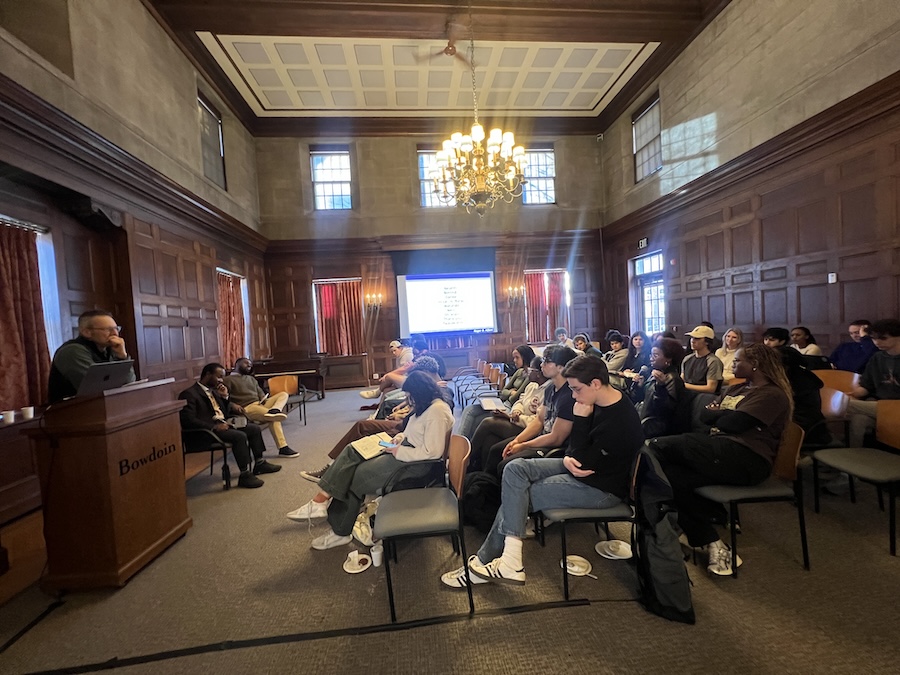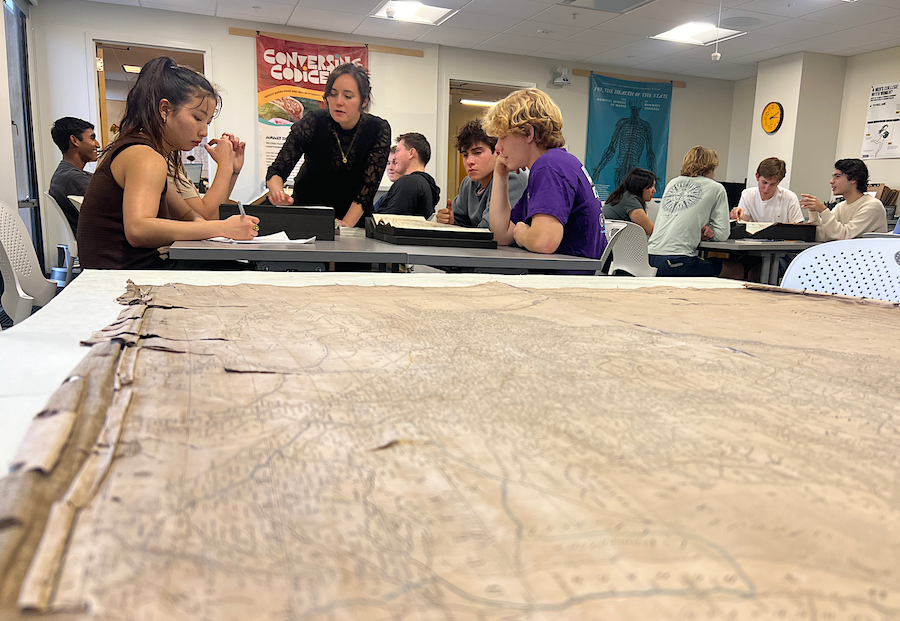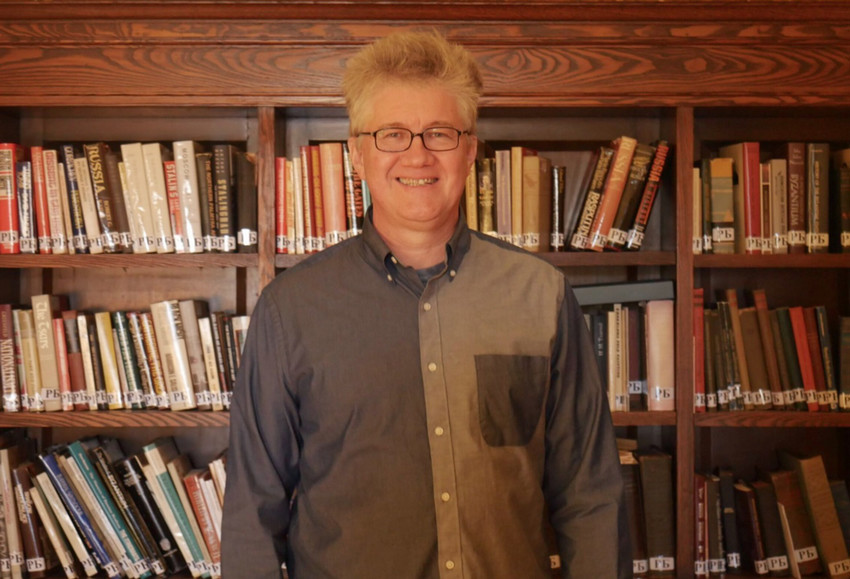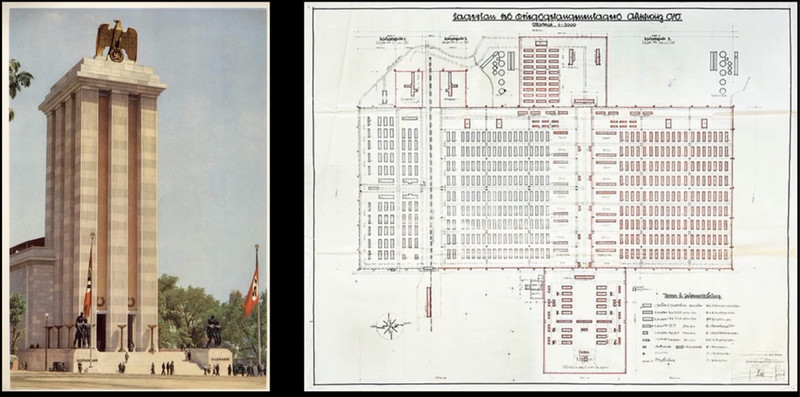Historian Patrick Rael Explains ‘Long Death of Slavery’
By Rebecca Goldfine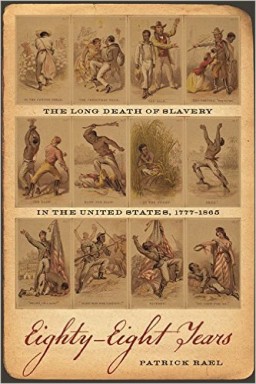
Ending slavery in the United States was a protracted and tortuous process, lasting from 1777, when Vermont became the first state to outlaw slavery, to 1865, when the 13th Amendment finally abolished slavery nationwide.
In his new book, Eighty-eight years: The Long Death of Slavery in the United States, 1777-1865, Professor of History Patrick Rael examines why abolition didn’t happen as quickly or easily in the U.S. as it did in other countries in the Atlantic world. Why, he asks, “did it took a bloody civil war, costing the lives of some 750,000 Americans, to end it?”
On Thursday night, Rael gave a book talk on campus in advance of upcoming 150th anniversary, on Dec. 6, of the ratification of the 13th Amendment. Bowdoin will be marking this anniversary, in part, by screening and discussing Steven Spielberg’s 2012 film Lincoln on Monday, Nov. 23. The event is open to the public.
At the start of his talk, Rael invited his audience to join him in rethinking “the entire coming of the American Civil War.” Along with explaining why stamping out slavery in the U.S. took nearly nine decades, he also aims in his book to restore the important role slaves played in securing their own freedom.
Unlike the United States, other countries in Central and South America ended slavery after shorter periods of unrest. Half a million slaves in Haiti fought a 13-year revolution against France, winning their independence and a free state in 1804. Revolutionary fervor throughout the Spanish colonies also precipitated the end of slavery. Not only were slaves freed to join the battles in some cases, but “justifying revolution through universal rights made comparisons with slavery impossible to miss,” Rael said. “By the start of the American Civil War slavery was largely dead in mainland Spanish Latin America.”

Rael pointed out that the United States, too, began its slow march toward abolition during its Revolutionary War. “Its liberal ideology fostered a wave of state-centered abolitions that at least nominally freed the northern states,” starting in 1777, when Vermont wrote slavery out of its state constitution, he said. “In the half-century from 1777 to 1827, every northern state either freed its slaves or set them on the path of complete emancipation.” This led to President Abraham Lincoln famously describing the country as “a house divided, half slave and half free.”
But getting rid of slavery throughout the United States would be more difficult than in other countries, Rael argues, due to a couple of major factors. First, the country had a “hyper-empowered slave periphery” — the influential slaveholding states concentrated in the south. In addition to the powers conceded by our federalist form of government to individual states, slaveholding states had also earlier won a number of concessions from the Framers of the Constitution to ensure they remain with the union. “Constitutional measures…guaranteed that slaveholders would enjoy political prestige beyond their numbers,” Rael said.
Second, the United States’ stable and democratic political system also slowed the end of slavery, Rael continued. “The party system submerged the slavery issue,” he explained, adding that “there were huge disincentives for the parties to even discuss slavery. Neither wanted to isolate itself from the massive center of the electorate by championing a single, highly divisive issue.”
To eradicate slavery, the United States needed, like other nations that had banned the institution, “abolitionist ideology and slave resistance to come together,” Rael said, but “in even more spectacular ways.”
Rael then described examples of how slave resistance efforts melded with antislavery ideology to help fracture and reformulate the country’s political system, giving rise to new antislavery parties, including the Republican Party, and dividing the Democratic party into southern and northern factions. “The remarkable mix of slave rebellion combined with incessant and increasingly violent antislavery agitation [helped] reconfigure national politics,” he said.
After Lincoln was elected president, the southern states launched their secession effort, setting off the Civil War. Rael noted that the position of Lincoln’s party on slavery going into the war was merely to prevent slavery from expanding into the western territories. But this was enough to convince the southern states that “slavery was doomed.”
The Union focused on emancipating slaves only when it became clear that the war could not be won without enlisting them as soldiers, Rael said. “Had the war ended quickly, for either side, slavery would have survived….But the war stalemated, and this convinced Lincoln and Congress to free and arm the slaves,” he explained.
The way slavery ended in the United States, the way “liberty had to be wrested from the recalcitrant landowning class of the South by a Union government almost as reluctant to free the slaves as the South was” would lead to another long struggle, Rael said. “That ordeal, which we call Reconstruction, lasted three times as long as the war itself. And, unlike the Civil War, it did not end in a glorious victory for the forces of liberalism.”
